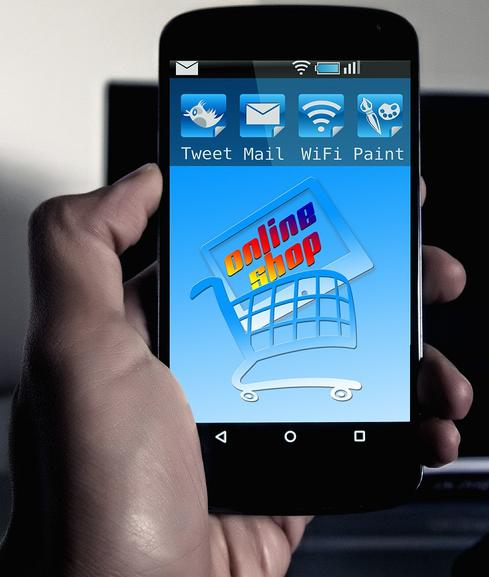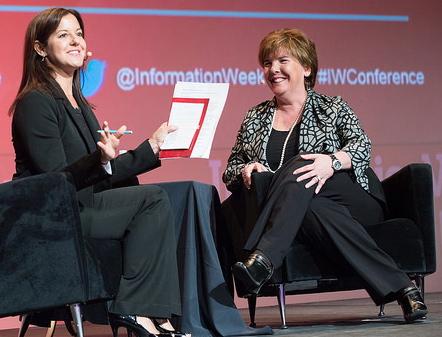Google used the opening day of its I/O 2015 developer conference to offer details about the next version of Android, what it has planned for virtual reality and the Internet of Things, and free unlimited photos.


7 Bold Tech Ideas That Will Make You Uncomfortable
7 Bold Tech Ideas That Will Make You Uncomfortable (Click image for larger view and slideshow.)
Google presented a preview of the next version of Android, an Android offshoot for the Internet of Things, and a new version of Google Photos, among other announcements, during the keynote session at its Google I/O 2015 developers conference in San Francisco on Thursday. The event is taking place May 28-29 at the Moscone Center under noticeably tighter security than in recent years.
Google highlighted its interest in virtual reality through wraparound projection screen graphics in the keynote auditorium. The animation depicted a rain of ones and zeros similar to the iconic torrent of alphanumeric characters in the title sequence of The Matrix.
Sundar Pichai, SVP of products, presided over the event, noting that Google Search, YouTube, Maps, Gmail, Android, and Chrome all have more than 1 billion users.
Android M: Focus On User Experience
Various Google executives described features in Android M Developer Preview, the next version of Android. Available to developers now, the software is expected to be available to the general public in Q3 2015.
Android M is focused on polish and quality, which, coincidentally, are what Apple has chosen to focus on for its upcoming OS releases. Haste to market has a price.
"The central theme of M is improving the core user experience," said Dave Burke, VP of engineering.
New Android M features include:
A revised permission system that allows apps to ask for permission when a feature is used rather than at installation
An improved mobile browsing experience through Chrome Custom Tabs, a way to launch a lightweight version of Chrome with third-party app UI elements (rather than exiting an app or implementing an in-app Web view)
Support for Android Pay mobile payments
Android Intents improvements that support direct navigation from one app to another (app links)
Improvements in power and charging that can result in doubled standby time
Support for USB Type C, which can allow three to five times faster charging
Android M will also include an expanded version of Google Now, the company's automated assistant application. Soon, Google Now will have a feature called Now on Tap that allows users to invoke Google Now based on the app context following a tap. This technique allows Google Now, for example, to provide information about a movie mentioned in an email on-screen at the time of the tap event.
Developers will be able to integrate this functionality into their own apps, in order to encourage users to re-engage with their apps.
Android Pay: A Meaningful Business?
Android Pay represents a second attempt to turn mobile payments into a meaningful business. In 2011, the company launched Google Wallet, a mobile payments app designed to store multiple credit cards, in partnership with Citi, MasterCard, First Data, and Sprint. But the product never won wide support from consumers, and suffered from personnel departures. What's more, it earned active antagonism from other mobile carriers, which pushed their own Isis payment service and blocked Google Wallet.
AT&T Mobility, T-Mobile USA, and Verizon Wireless changed the name of their service from Isis to Softcard in 2014 to avoid the undesirable association with the acronym for the Islamic State of Iraq and Syria. Then, in February 2015, Google acquired Softcard from the mobile carriers, and a truce of sorts was formed out of the practical need to respond to the emergence of Apple Pay, which has reinvigorated the mobile payments market and may see further enhancements at Apple's developer conference in June.
In an email to InformationWeek, John Haro, CTO of Vibes, a mobile marketing company, characterized Android Pay as an effort to play nice with the major payment networks and banks. "What Google showed us this morning is the result of this focus and acknowledgement that reducing friction and removing roadblocks for the customer is critical to gain adoption," he said. "Including better support for fingerprint scanning will further improve this experience and bring it in line with what consumers on the iPhone are becoming accustomed to."
Haro suggested the similarities in Android Pay and Apple Pay indicate the standardization of mobile payments, and predicts that consumers will soon see mobile payments as a compelling alternative to traditional credit cards.
Android For The Internet Of Things
Pichai offered an overview of a version of the Android operating system for the Internet of Things called Project Brillo. "Brillo is derived from Android, but we have taken Android and polished it down," said Pichai. "Hence the name 'Brillo.'"
Brillo will be supported by a JSON-like communication schema called Weave that provides a common format devices can use to communicate. Brillo is due in Q3 2015, while Weave is due in Q4.
A renovated version of Google Photos, a cloud photo storage service, debuted, now separate from Google+. The mobile app includes the ability to view images by day, month, or year; a new editing interface; and support for gestures like pinch-to-zoom. Most significantly, Google Photos offers unlimited free storage of photos up to 16MP and of videos up to 1080p.
Clay Bavor, VP product management, took a moment to provide an update on Google's virtual reality efforts. With more than 1 million Google Cardboard VR viewers distributed since last year, Google is updating Cardboard to support larger phones.
"Phones, it turns out, got a lot bigger in the past year," said Bavor.
Google is introducing an educational program called Expeditions that allows teachers to take classes on VR field trips. And it is developing a VR program called JUMP to promote the construction and use of 360 cameras -- to encourage the creation of 3D stereoscopic imagery for VR viewing and to provide a platform for processing and viewing the content. GoPro has committed to creating such a camera. And this summer, YouTube will support JUMP content.
Google previewed various developer tool enhancements. Android Studio 1.3 will include faster build speeds, a new memory profiler, and support for full C++ editing and debugging support.
Polymer, Google's JavaScript library for creating modular Web components, has reached its 1.0 milestone. Introduced last year, Polymer offers Web developers an easy way to implement reusable interface and design elements.
And Google made numerous improvements to the Google Play Store, such as visitor analytics and the ability to create a vendor-specific home page for multiple apps.
[Did you miss any of the InformationWeek Conference in Las Vegas last month? Don't worry: We have you covered. Check out what our speakers had to say and see tweets from the show. Let's keep the conversation going.]
About the Author(s)
You May Also Like







